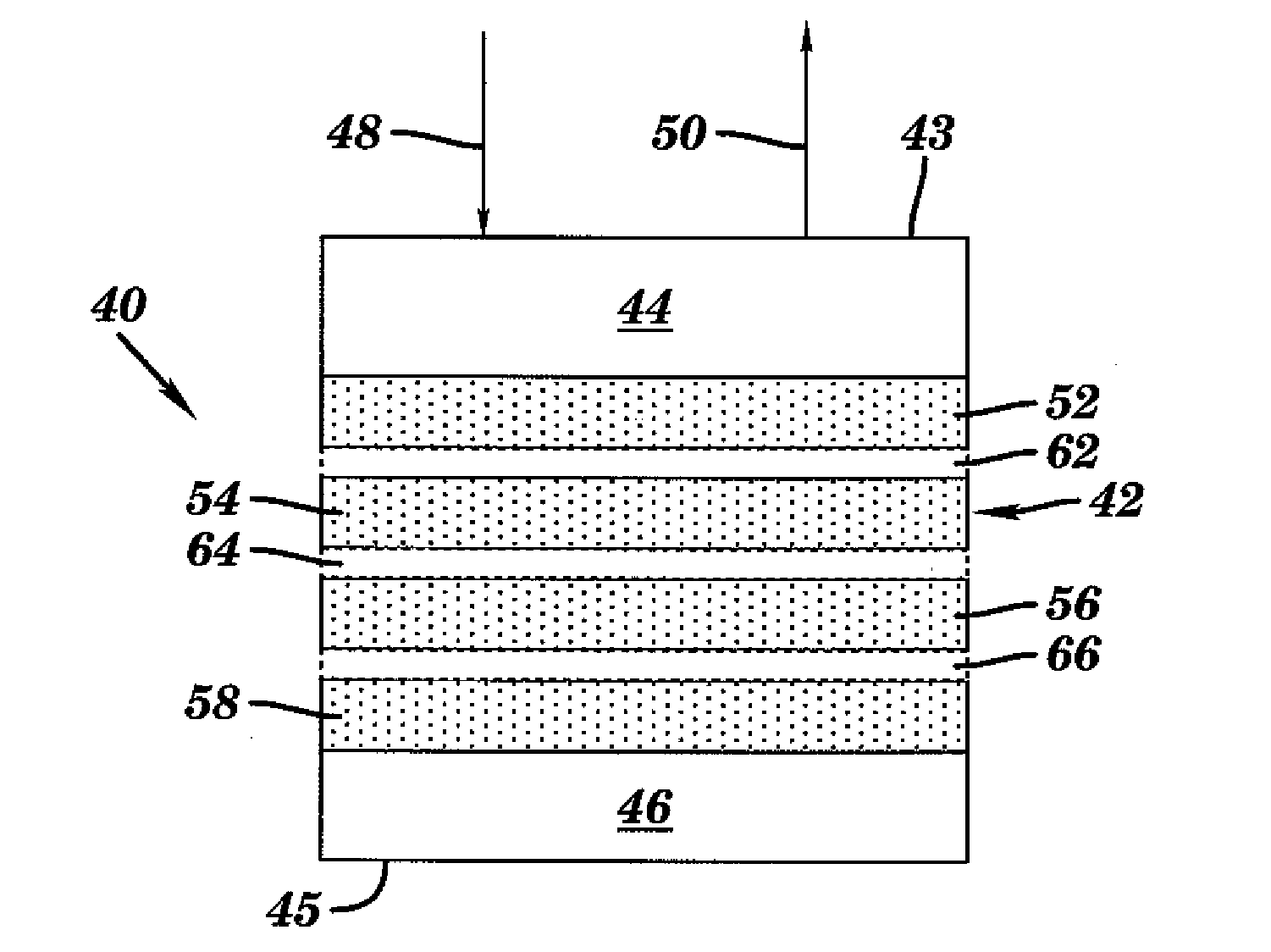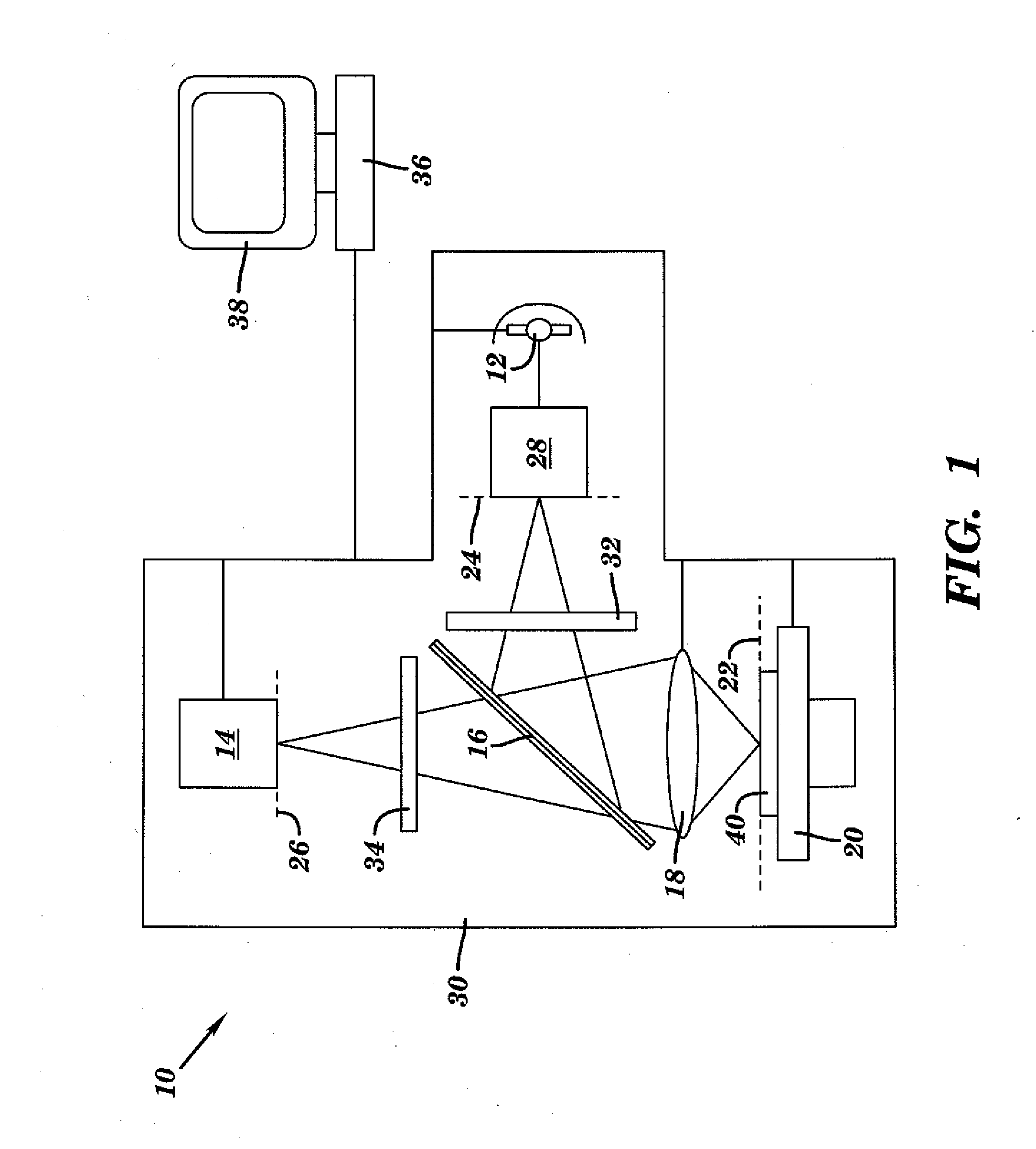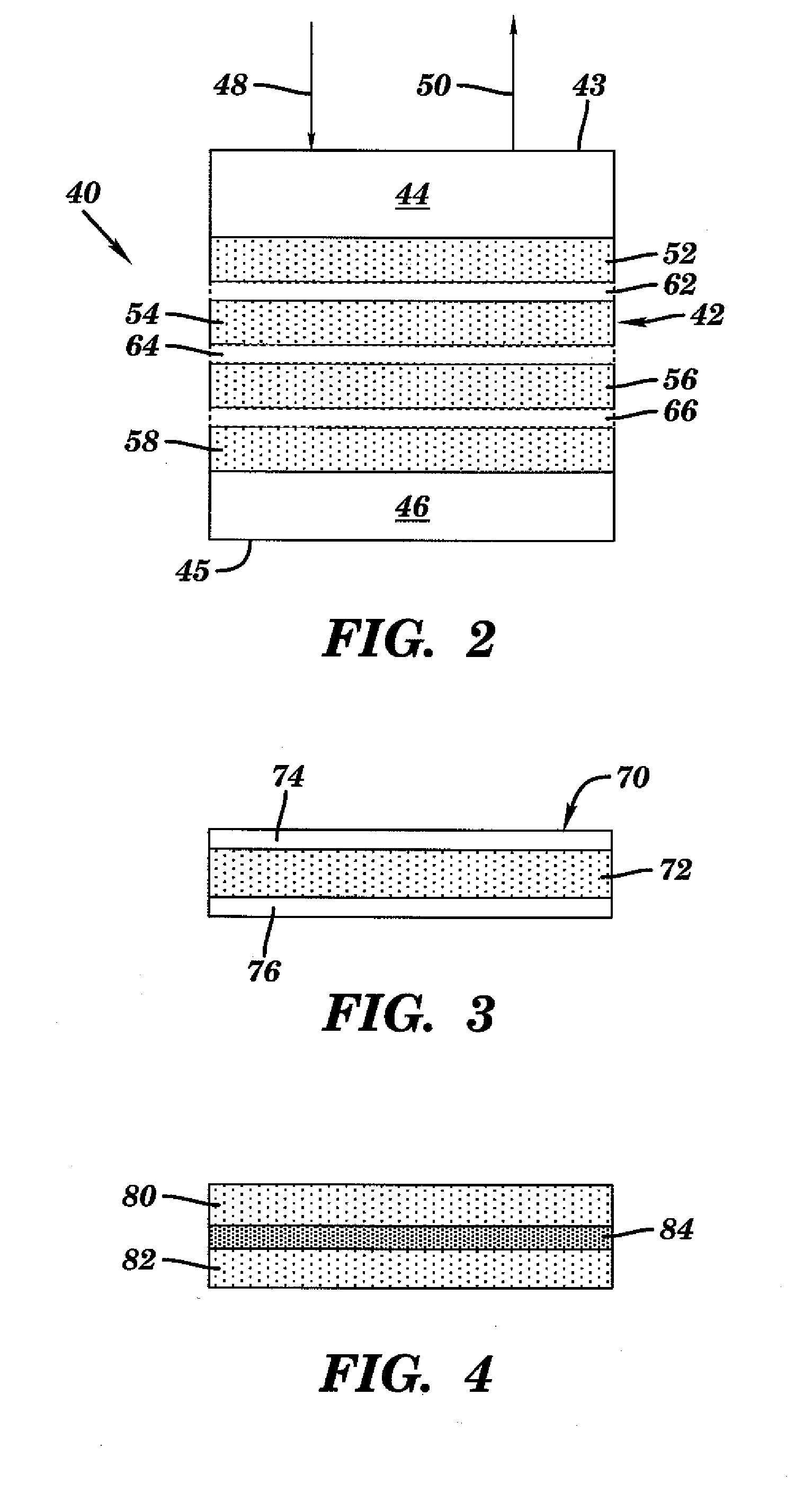Fluorescence calibrator for multiple band flat field correction
a calibrator and fluorescence technology, applied in calibration apparatus, instruments, optical radiation measurement, etc., can solve the problems of systematic errors, systemic errors, and spatial non-uniformities of both irradiation and imaging, and achieve the effect of reducing interference effects and reducing interference effects
- Summary
- Abstract
- Description
- Claims
- Application Information
AI Technical Summary
Benefits of technology
Problems solved by technology
Method used
Image
Examples
Embodiment Construction
[0031]The following is a detailed description of the preferred embodiments of the invention, reference being made to the drawings in which the same reference numerals identify the same elements of structure in each of the several figures.
[0032]A fluorescence spectroscopic instrument 10 compatible with the invention is shown in FIG. 1 including a light source 12 capable of producing a range of excitation wavelengths and a detector array 14 capable of detecting relative intensities of a range of emission wavelengths. A beamsplitter 16 connects both the light source 12 and the detector array 14 to a common imaging system 18 that is focused above a sample stage 20. The entire light path originating at the light source 12, traversing the sample stage 20 (albeit converted to other wavelengths), and ending at the detector array 14 is fully enclosed within a light-tight housing 30 or other enclosure, which prevents stray light from entering the light path or otherwise reaching the detector ...
PUM
 Login to View More
Login to View More Abstract
Description
Claims
Application Information
 Login to View More
Login to View More - R&D
- Intellectual Property
- Life Sciences
- Materials
- Tech Scout
- Unparalleled Data Quality
- Higher Quality Content
- 60% Fewer Hallucinations
Browse by: Latest US Patents, China's latest patents, Technical Efficacy Thesaurus, Application Domain, Technology Topic, Popular Technical Reports.
© 2025 PatSnap. All rights reserved.Legal|Privacy policy|Modern Slavery Act Transparency Statement|Sitemap|About US| Contact US: help@patsnap.com



